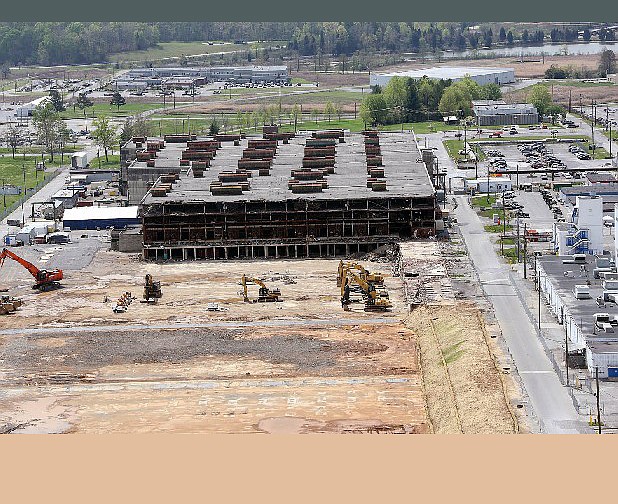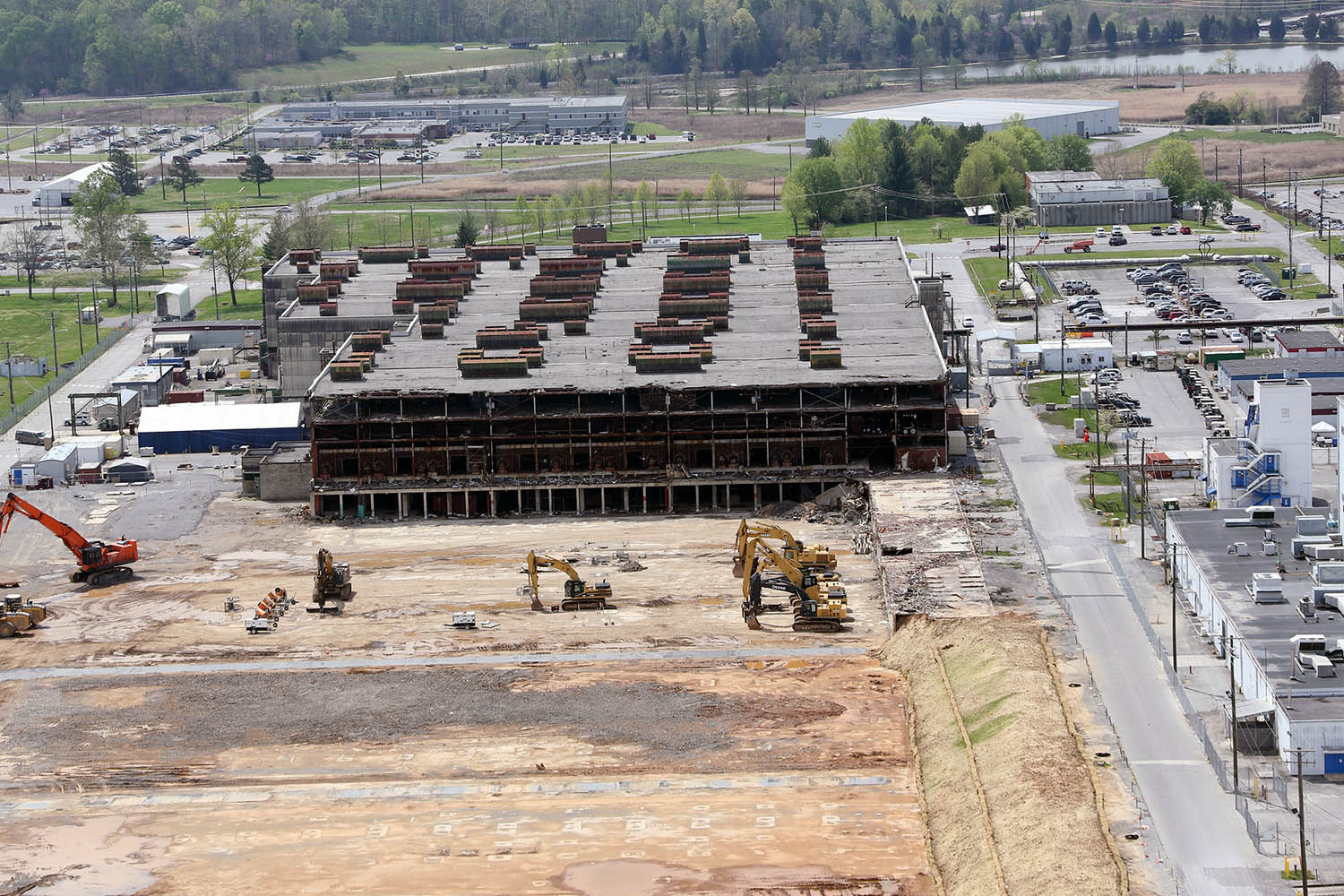OAK RIDGE -- Demolition of the last section of K-25, an important part of U.S. nuclear history and once the world's largest building, will begin this week.
Mark Whitney, the U.S. Department of Energy's cleanup chief in Oak Ridge, last week said the demolition activities are scheduled to resume on or before today.
Demolition work at K-25 has been on hold for a few months while workers sampled and prepared the last remaining section, which comprises 6 of the original 54 units that processed uranium for use in atomic bombs and nuclear reactors.
This section of the building was segregated and saved for last because some of the equipment is contaminated with technetium-99, a slow-decaying radioactive material that poses special concerns -- especially if released into the environment. The strategy was to avoid cross-contaminating other areas of K-25 during the demolition project and isolate the waste materials and equipment bearing Tc-99, which will be disposed of separately.
Lots of waste
According to Allen Schubert, a spokesman for URS-CH2M Oak Ridge (UCOR), DOE's cleanup contractor in Oak Ridge, the demolition of the remaining units of K-25's East Wing will generate an estimated 22,378 cubic yards of waste. More than 90 percent of the waste will be transported to DOE's Oak Ridge landfill, which is designated for hazardous and radioactive waste from Superfund projects.
The rest of the waste, about 2,085 cubic yards, apparently will have too much Tc-99 to qualify for the Oak Ridge facility and will be shipped to the Nevada National Security Site for disposal.
Schubert said demolition of the K-25 building should be completed by the end of February. Some other related structures, including a retaining wall along the side of the East Wing, will be torn down by sometime in April, he said.
"By mid-June all building debris and wastes will be gone," Schubert said.
Leo Sain, the president of UCOR, last week said the contractor had completed a detailed evaluation of the K-25 structure that's still standing and was ready to move forward.
Whitney said the remaining units had been declared "criticality incredible," which means that no matter what happens during demolition there's not enough enriched uranium in place to achieve nuclear criticality -- an uncontrolled nuclear chain reaction and dangerous release of radiation.
"The next step is we will condemn the building," the DOE official said.
Quick pace
Whitney said the contractor has been moving so fast that the schedule for taking down the last part of the building has been revised multiple times.
"We've kept moving the date up because they keep moving so quickly on the pre-demo activities," he said. "They're doing a great job."
K-25 was built during the World War II Manhattan Project, and it produced much of the enriched uranium for the nation's Cold War nuclear arsenal. Operations were shut down in the original building in the early 1960s, and it was mainly used for storage for the decades that followed.
Demolition of the mile-long, U-shaped building began in December 2008.
History buffs and preservationists sought to save a piece of the building for future generations to see, so they could appreciate the monumental engineering effort that went into building K-25. DOE initially agreed to preserve the North Tower -- which formed the bottom of the "U" -- but after demolition began in earnest the Department of Energy decided that the building was too deteriorated to safely salvage.
DOE has agreed to spend millions of dollars to construct a visitors center and museum and support other projects to tell the K-25 story.

